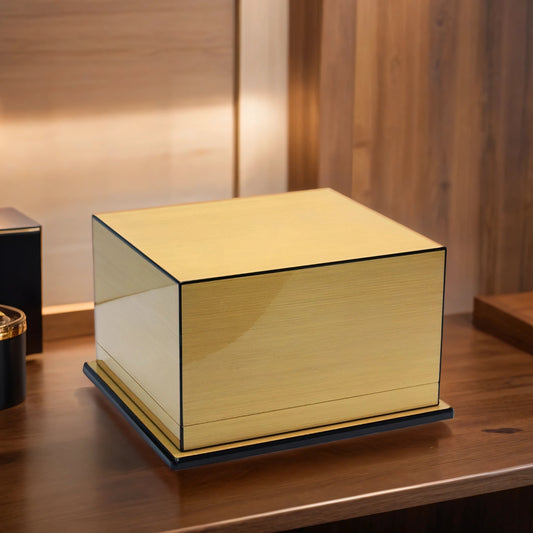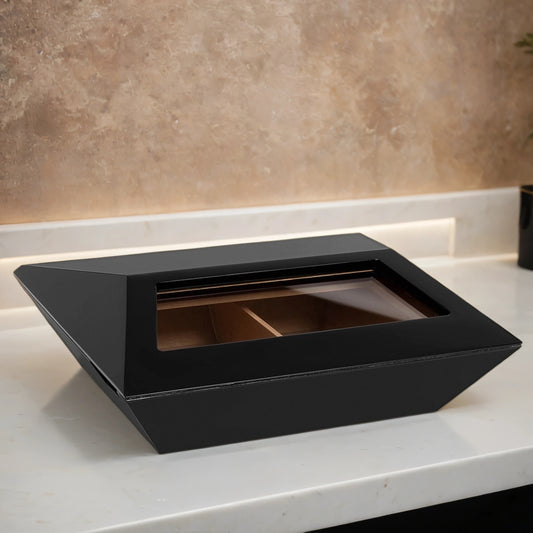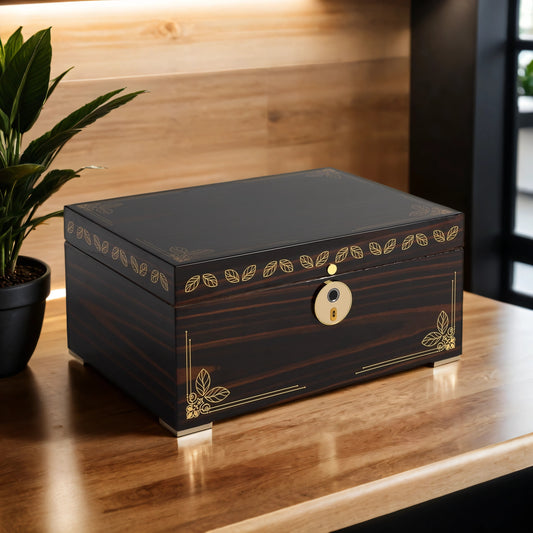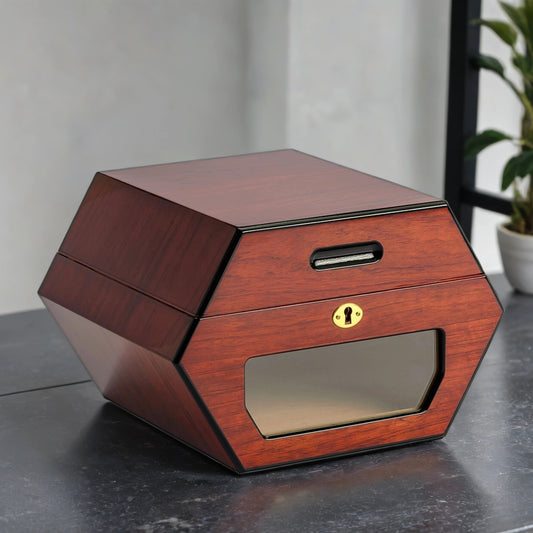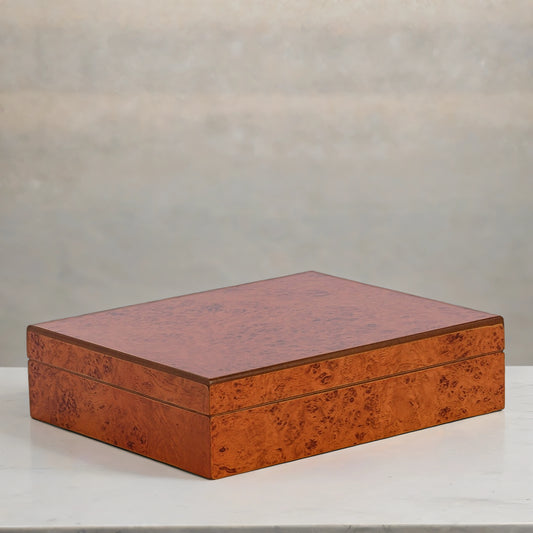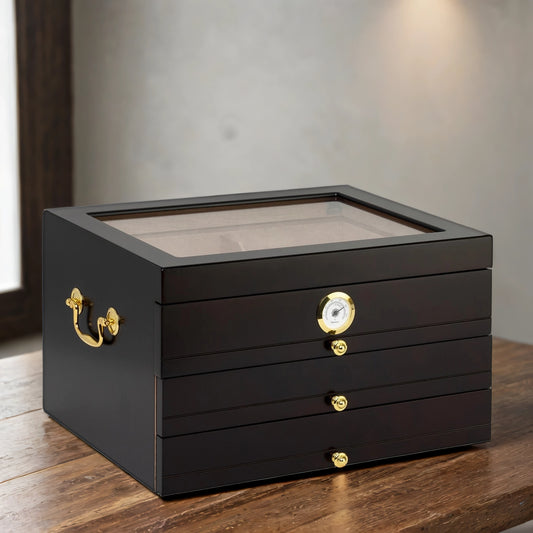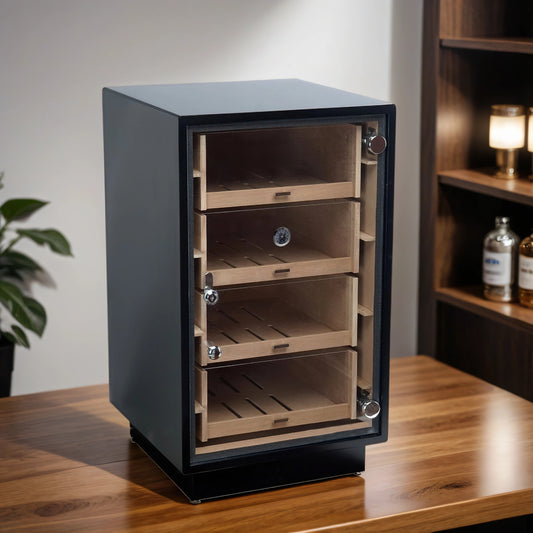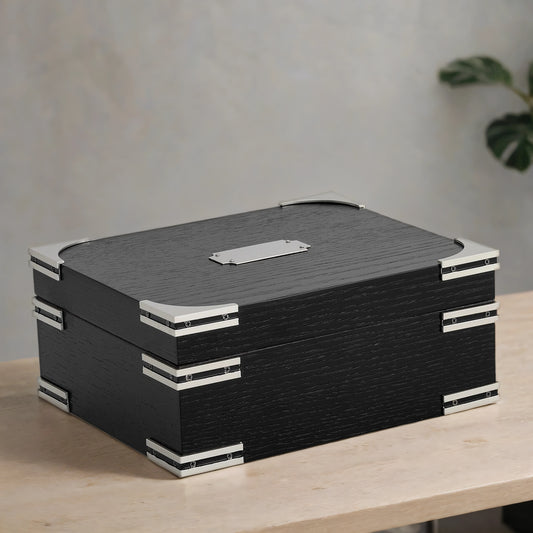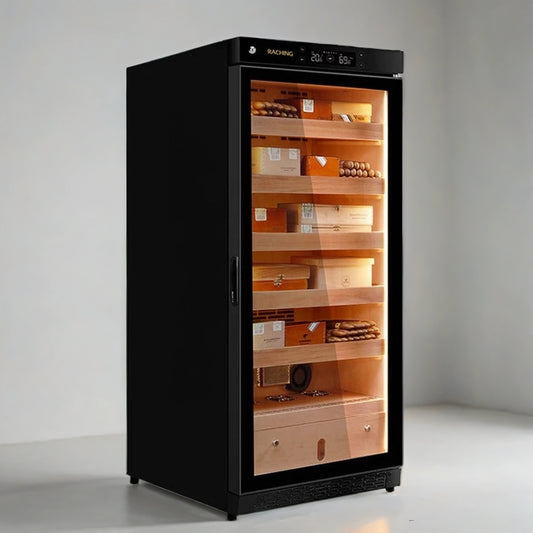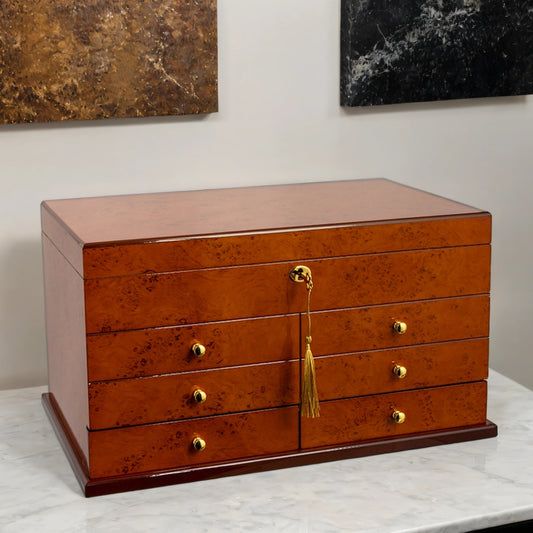
How To Use A Humidor: Simple Instructions For Beginners
A humidor is more than just a storage box, it’s your cigars’ best friend, their lifeline to staying fresh and flavorful. By maintaining the perfect balance of humidity and temperature, a cigar humidor ensures your cigars are always ready to deliver their peak performance. But like any trusted companion, it needs some TLC to do its job well. In this guide, we’ll take you through everything you need to know to use your humidor effectively, from setup and seasoning to troubleshooting and advanced tips.
Understanding Your Humidor
Before diving into the nitty-gritty, it’s essential to know your humidor’s key components. Think of it as getting to know the “engine” before hitting the road. The hygrometer measures the humidity inside, the humidifier keeps that humidity steady, and, in some cases, there’s a thermostat to regulate temperature. Different types of humidors, whether personal, travel-sized, cabinet, or walk-in, come with varying features and capacities, so understanding your specific model is critical.
Choosing a humidor isn’t just about how good it looks sitting on your desk (although we all know that helps). The size and type should match your smoking habits. If you’re a casual smoker, a personal humidor will do. But for serious collectors housing hundreds, or even thousands, of cigars, a cabinet or walk-in humidor might be the ticket. Picking the right humidor is the first step to a smooth cigar-smoking journey, which is why we created this comprehensive guide on how to choose the best cigar humidor for your specific set of needs.
The Initial Setup
Let’s get one thing straight: you can’t just pop open a new humidor, toss in your cigars, and call it a day. It takes preparation to create the perfect environment. Once you’ve seasoned and calibrated your humidor, you’ll have a cigar sanctuary worthy of envy.
Seasoning Your Humidor
Seasoning a humidor isn’t about sprinkling salt and pepper—it’s about adjusting your humidor’s humidity. To start, gently wipe down the interior with a sponge dampened with distilled water (and no, dunking it isn’t seasoning, it’s a disaster). Then, place a dish of distilled water or a seasoning pack inside, close the lid, and let it sit for one to two weeks. This process allows the wood to absorb moisture, preventing it from leeching humidity from your cigars later.
Calibrating the Hygrometer
If your hygrometer isn’t accurate, you’re flying blind. Use the salt test: place damp salt in a bottle cap, seal it in a bag with the hygrometer, and wait 24 hours. It should read 75%. If it doesn’t, adjust it accordingly. A properly calibrated hygrometer is your best friend for maintaining ideal conditions.

Loading the Humidor
When it’s finally time to load your cigars, arrange them with enough space for air to circulate. Overcrowding can lead to uneven humidity, which affects aging and flavor. For extra organization, group cigars by brand, size, or wrapper type. Not only does this keep things tidy, but it also helps you grab your favorite smoke without disturbing the rest of the stash.
Maintaining Optimal Conditions
Now that your humidor is up and running, keeping it in top shape is key. Think of it as ongoing maintenance for your car—it ensures peak performance for the long haul.
Regular Monitoring
Keep an eye on the humidity (68-72%) and temperature (around 70°F) with your hygrometer. In the early days, check it daily. Once stable, you can dial back to less frequent monitoring. If humidity starts to fluctuate, adjust the humidifier by re-soaking elements or tweaking electronic controls.
Adjusting the Humidifier
External conditions can wreak havoc on your humidor. Dry winters may require frequent refills of distilled water, while humid summers may call for reducing moisture. Regularly adjusting based on your hygrometer’s readings will keep things balanced.
Routine Maintenance
Cleanliness matters. Wipe down the interior occasionally with a damp, unscented cloth to remove dust or residue. If mold rears its ugly head, clean it immediately with isopropyl alcohol and air out the humidor. Replacing humidifier elements as needed ensures everything runs smoothly.
Troubleshooting Common Problems
Even with careful maintenance, problems can crop up. Here’s how to handle them like a pro:
Addressing Dry or Over-Humidified Cigars
If your cigars are too dry, rehydrate them slowly—sudden changes can crack wrappers. Place them in a separate section of the humidor and gradually increase humidity over a few days. For over-humidified cigars, crack the lid slightly to let some dry air in, lowering humidity gently.
Solving Seal Issues
A poor seal can let humidity escape. To test, try the dollar bill trick: close a bill halfway in the lid and pull it out. A slight resistance means a good seal, while an easy pull means it needs work. Tightening hinges or replacing seals often does the trick.

Advanced Tips
Ready to level up? Incorporating advanced tools like electronic humidifiers and smart hygrometers can give you greater control. Electronic humidifiers maintain specific humidity levels automatically, while smart hygrometers sync with apps for real-time monitoring and alerts. These upgrades are particularly handy for large collections or sensitive climates, helping you achieve cigar perfection with minimal effort. If you'd like an even more hands off approach, you can even look into thermoelectric and automatic humidors!
Conclusion
Using a humidor effectively isn’t just about protecting cigars—it’s about elevating your smoking experience. With proper setup, regular maintenance, and quick troubleshooting, you’ll have cigars that are fresh, flavorful, and always ready to impress. A humidor isn’t just a box; it’s a vital tool for cigar enthusiasts who value quality and care.
Treat your cigars well, and they’ll return the favor with every draw. Follow these steps, add a little patience, and your humidor will be the cornerstone of your cigar journey for years to come.

